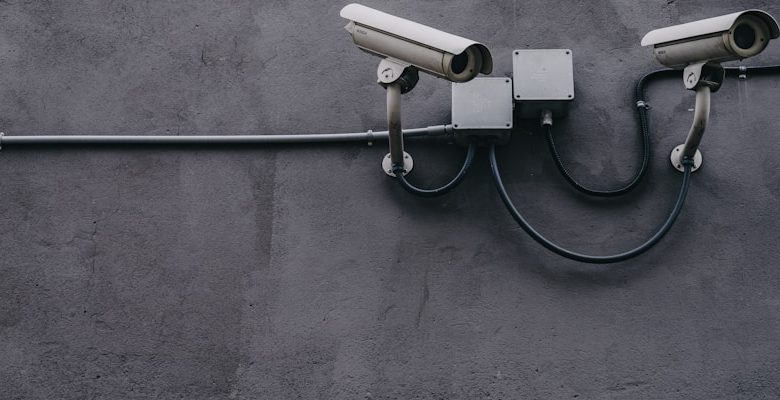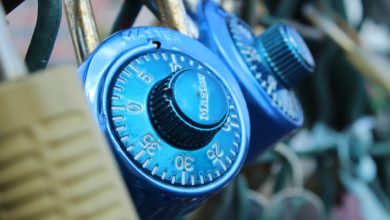How to Conduct a Security Audit for Your Crypto Portfolio

- Understanding the importance of security audits for your crypto portfolio
- Key steps to take before conducting a security audit for your crypto holdings
- Choosing the right tools and resources for a thorough security audit
- Common vulnerabilities to look out for during a crypto portfolio security audit
- Best practices for securing your crypto assets post-audit
- The role of continuous monitoring in maintaining the security of your crypto investments
Understanding the importance of security audits for your crypto portfolio
Understanding the significance of security audits for your cryptocurrency portfolio is paramount in safeguarding your investments. These audits provide a comprehensive assessment of the security measures in place to protect your digital assets from potential threats and vulnerabilities. By conducting regular security audits, you can identify and address any weaknesses in your portfolio’s security infrastructure, ensuring that your funds are secure and protected.
Key steps to take before conducting a security audit for your crypto holdings
Before conducting a security audit for your crypto holdings, there are several key steps that you should take to ensure a thorough evaluation of your portfolio’s security measures. The first step is to review all of the platforms and exchanges where you hold your cryptocurrency assets. Make a list of all the accounts and verify that you have secure passwords and two-factor authentication enabled for each one.
Next, check for any recent security breaches or hacks that may have affected the platforms you use. Stay informed about the latest security threats in the crypto space to better protect your investments. It’s also important to keep your software and hardware wallets up to date with the latest security patches and updates.
Another crucial step is to conduct a thorough review of your private keys and seed phrases. These are the keys to your crypto kingdom, so it’s essential to keep them safe and secure. Consider storing them in a secure offline location, such as a safe deposit box or a hardware wallet.
Additionally, consider using a reputable security audit firm to perform a comprehensive review of your crypto holdings. They can help identify any vulnerabilities in your security setup and provide recommendations for improving it. Remember, the security of your crypto portfolio is paramount, so taking these key steps before conducting a security audit is crucial to protecting your investments.
Choosing the right tools and resources for a thorough security audit
When conducting a security audit for your crypto portfolio, it is crucial to choose the right tools and resources to ensure a thorough assessment of your assets. Selecting the appropriate tools can help you identify any vulnerabilities and weaknesses in your security measures, allowing you to take necessary actions to protect your investments.
There are various tools available that can assist you in conducting a security audit, such as vulnerability scanners, penetration testing tools, and monitoring software. These tools can help you detect any potential threats or breaches in your security system, enabling you to strengthen your defenses and prevent unauthorized access to your crypto assets.
It is essential to consider the specific needs of your crypto portfolio when selecting tools for your security audit. Some tools may be more suitable for certain types of assets or vulnerabilities, so it is important to choose tools that align with your unique requirements. Additionally, conducting thorough research on the latest security trends and best practices can help you stay informed and make informed decisions when selecting tools for your audit.
Common vulnerabilities to look out for during a crypto portfolio security audit
When conducting a security audit for your crypto portfolio, it is crucial to be aware of common vulnerabilities that could compromise the safety of your assets. By identifying and addressing these vulnerabilities, you can enhance the security of your portfolio and reduce the risk of unauthorized access or theft.
- One common vulnerability to watch out for is weak passwords. Using simple or easily guessable passwords can make it easier for hackers to gain access to your accounts and steal your cryptocurrencies.
- Another vulnerability is phishing attacks, where scammers try to trick you into revealing your login credentials or other sensitive information. Be cautious of unsolicited emails or messages asking for personal details.
- Unsecure devices and networks can also pose a risk to your crypto portfolio security. Make sure to use secure connections and keep your devices updated with the latest security patches to prevent unauthorized access.
- Lastly, insecure storage methods, such as keeping your private keys or passwords in unencrypted files or sharing them online, can make it easier for attackers to steal your funds. Use hardware wallets or secure password managers to store your sensitive information safely.
By being aware of these common vulnerabilities and taking steps to address them, you can significantly improve the security of your crypto portfolio and protect your investments from potential threats.
Best practices for securing your crypto assets post-audit
After conducting a security audit for your crypto portfolio, it is crucial to implement best practices to secure your assets. Here are some key steps to follow post-audit:
- Keep your private keys secure: Store your private keys offline in a secure location, such as a hardware wallet or a cold storage solution.
- Enable two-factor authentication (2FA): Add an extra layer of security to your accounts by enabling 2FA wherever possible.
- Regularly update your software: Make sure to keep your wallet software and any other crypto-related applications up to date to patch any potential vulnerabilities.
- Use strong, unique passwords: Create complex passwords for your accounts and consider using a password manager to securely store them.
- Be cautious of phishing attempts: Be vigilant of phishing emails and messages that may try to trick you into revealing your sensitive information.
- Diversify your holdings: Spread your investments across different assets to reduce risk in case of a security breach.
By following these best practices, you can help protect your crypto assets from potential security threats and minimize the risk of unauthorized access to your portfolio.
The role of continuous monitoring in maintaining the security of your crypto investments
Continuous monitoring plays a crucial role in safeguarding your crypto investments. By regularly monitoring your portfolio for any suspicious activities or potential security threats, you can take proactive measures to protect your assets. This involves staying updated on the latest security trends and best practices in the crypto industry.
One key aspect of continuous monitoring is keeping track of any unauthorized access attempts to your accounts or wallets. By setting up alerts for any unusual login activities or changes in account settings, you can quickly respond to any potential security breaches before they escalate. Additionally, monitoring the security of the platforms and exchanges where you hold your investments is essential in ensuring the safety of your funds.
Furthermore, staying informed about any security vulnerabilities or hacks affecting popular crypto assets can help you make informed decisions about your investment strategy. By regularly reviewing news and updates from reputable sources, you can stay ahead of potential threats and take necessary precautions to protect your portfolio.
In conclusion, continuous monitoring is a critical component of maintaining the security of your crypto investments. By staying vigilant and proactive in monitoring your portfolio, you can minimize the risks of falling victim to cyber attacks or security breaches. Remember, investing in crypto assets comes with its own set of risks, but with the right security measures in place, you can protect your investments and trade with peace of mind.



